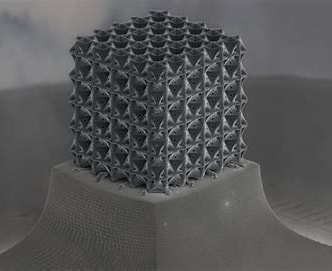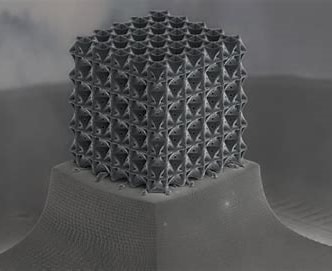
In an era where the boundaries of science and technology are continuously being pushed, the convergence of quantum artificial intelligence (AI) and nanotechnology has given birth to a groundbreaking material: the nanolattice. This structure, celebrated as the strongest light material on Earth, is a marvel of design and innovation, and its creation underscores the transformative potential of quantum AI in material science.
A New Frontier: Quantum AI and Material Design
Traditional AI systems already excel in optimizing designs and analyzing massive datasets, but the introduction of quantum AI takes this to an entirely new level. By harnessing the principles of quantum mechanics—like superposition and entanglement—quantum AI can process complex simulations and solve problems that would take classical AI years to compute.
Quantum AI played a crucial role in optimizing the nanolattice’s intricate architecture. The nanolattice is a material made up of nanoscale structures meticulously arranged in a lattice-like pattern. This design gives it remarkable strength while keeping its density remarkably low. Quantum AI allowed scientists to explore a vast array of structural configurations and identify the one that maximized strength without compromising lightness. These computations, nearly impossible for conventional systems, were completed efficiently by quantum AI.
The Nanolattice: A Triumph of Engineering
The nanolattice comprises materials such as carbon or silica, engineered at the nanoscale to form hollow, interconnected beams resembling a scaffold. This meticulous arrangement minimizes weight while distributing stress evenly across the structure. The result? A material that is not only lighter than plastic but also stronger than steel.
One of the nanolattice’s most impressive features is its ability to maintain its properties under extreme conditions. For example, it is highly resilient to deformation, making it ideal for aerospace applications, advanced manufacturing, and even medical implants. It’s a material that could revolutionize industries, offering unprecedented performance and sustainability.
The Synergy of Science and Technology
The creation of the nanolattice highlights the power of interdisciplinary collaboration. Quantum AI doesn’t just provide answers; it redefines the questions we can ask. By simulating molecular interactions and optimizing structures at an atomic level, it enables scientists to design materials that were previously confined to the realm of imagination.
This breakthrough also serves as a testament to AI’s growing importance in shaping our future. From environmental sustainability to next-generation manufacturing, quantum AI is poised to drive innovations that could redefine our relationship with materials and the world around us.
The Road Ahead
While the nanolattice is a monumental achievement, it is just the beginning. Quantum AI continues to open doors to materials with unprecedented properties, from self-healing composites to ultra-efficient energy storage solutions. The journey toward harnessing the full potential of quantum AI in material science promises a future where the limits of what we can create are bound only by our imagination.
The marriage of quantum AI and nanotechnology is a shining example of human ingenuity and technological progress. The nanolattice stands as a symbol of what’s possible when cutting-edge science meets visionary ambition—a material for today and future generations.




